Being Hindu
Being Hindu
Understanding a Peaceful Path
in a Violent World
Hindol Sengupta
ROWMAN & LITTLEFIELD
Lanham Boulder New York London
Published by Rowman & Littlefield
A wholly owned subsidiary of
The Rowman & Littlefield Publishing Group, Inc.
4501 Forbes Boulevard, Suite 200, Lanham, Maryland 20706
https://rowman.com
Unit A, Whitacre Mews, 26-34 Stannary Street, London SE11 4AB,
United Kingdom
Copyright 2018 by Rowman & Littlefield
All rights reserved. No part of this book may be reproduced in any form or by any electronic or mechanical means, including information storage and retrieval systems, without written permission from the publisher, except by a reviewer who may quote passages in a review.
British Library Cataloguing in Publication Information Available
Library of Congress Cataloging-in-Publication Data Available
ISBN 978-1-4422-6745-9 (hardback : alk. paper)
ISBN 978-1-4422-6746-6 (electronic)
 TM The paper used in this publication meets the minimum requirements of American National Standard for Information Sciences Permanence of Paper for Printed Library Materials, ANSI/NISO Z39.48-1992.
TM The paper used in this publication meets the minimum requirements of American National Standard for Information Sciences Permanence of Paper for Printed Library Materials, ANSI/NISO Z39.48-1992.
Printed in the United States of America
To my parents and Ishira
By all outward appearances our life is a spark of light between one eternal darkness and another.
Alan W. Watts, The Wisdom of Insecurity
Introduction
Believer
I had finished this book and was starting the editing process when CNN began airing promos of the first episode of its Believer series with Muslim religious studies scholar Reza Aslan, who I had heard, in the past, making an eloquent case for the irreparable harm done by sensationalist depictions of Islam and some of its practices or passages in the Quran.
I tuned in eagerly hoping for a measured depiction of religious practicessomething like National Geographics The Story of God. Aslan, I thought, would naturally understand the need for thoughtfulness as a prominent campaigner against extremist depictions of religions using fringe practices.
But even the trailers deeply disappointed me. Aslan had shot in Benaras, one of the most holy places for the Hindus with its many sacred temples and bathing ghats (platforms), where thousands come to bathe in the holy river Ganga. The most ancient name of Benaras, and the one most commonly used by Hindus, is Kashi, literally meaning the City of Light. It is famous for its evening prayers with hundreds of oil lamps on the banks of the river and the festivity and color in each temple.
As the Harvard religious studies scholar Diana Eck noted in her book Banaras: City of Light, it is a magnificent city (literally the first line of chapter 1 in her book) that for more than 2,500 years has attracted pilgrims and seekers from all around the world.
Riverside cremation happens on only two of Kashis eighty-seven ghats. The burning of the dead bodies on wooden pyres, the immersion of the ashes in the holy river, and the temples in the backgroundall of this has given Hindus a sense of a relentless cycle of life.
But I was dismayednot only did Aslan describe Benaras as the City of the Dead (he had clearly not even bothered to read Ecks renowned book, let alone any of the numerous famous books by Indian scholars about the city), he seemed not to have done even the most basic researchas basic as a Google search of the words Benaras and ghats. It took less than a minute on my laptop to search these two wordsthe Wikipedia page had the simple detail that out of eighty-seven ghats in Benaras, cremation happens on two, Harishchandra Ghat and Manikarnika Ghat. This information is also found on page 4 of Ecks book. I conducted this little experiment in order to determine how lazy Aslan and the CNN research team must have beenthe shows promo claimed that each of the eighty-seven ghats has dead bodies burning every day and suggested that the whole city becomes a sort of a giant pyre.
The focus of the promo and indeed the episode on Hinduism was on the aghorisa sect of extremely reclusive monks among Hindus. So small is the number of aghorisa few hundred, if that, among a billion Hindusthat most Hindus have never really even heard of, let alone met, an aghori. The aghoris believe that nothing is profane because all that exists in the universe exists in oneself to some degree. Believer showed Aslan supposedly eating a piece of charred flesh with an aghoriwith CNN flashing a cannibal bannerand being offered urine to drink. There was a strange dichotomy in the use of languagethe shows promo insisted that the ashes of the dead are dumped in the river rather than immersed, which is the natural phrase that every Hindu, and certainly every religious scholar, would use. Clearly Aslan was not unfamiliar with the wordin one promo he talks about immersing himself in various religious practices for the sake of the camera.
It was not clear how much immersing Aslan had done but Eck, after fifteen years of engaging with Hinduism and indeed immersing herself in the study of the city of Benaras, noted on the same page 4 that the cremation grounds are holy ground, for death in Kashi is acclaimed by the tradition as a great blessing.... Kashi is said to be the city of Shiva (the most eminent god in the Hindu trinity), founded at the dawn of civilization. Clearly, not the City of the Dead.
Without even the slightest sense of irony, CNN ran these promos and the show days after a Hindu man in the United States was murdered by a man shouting racial slurs.
From the moment Aslan and CNN started tweeting promos of the show, there was uproar in many parts of the world. In America, congresswoman Tulsi Gabbard of the Democratic Party sent out a series of eleven tweets, where she said that she was very disturbed that CNN is using its power and influence to increase peoples misunderstanding and fear of Hinduism.
Gabbard accused Aslan of trying to find sensationalist and absurd ways to portray Hinduism. She wrote:
Aslan and CNN didnt just throw a harsh light on a sect of wandering ascetics to create shocking visualsas if touring a zoobut repeated false stereotypes about caste, karma, and reincarnation that Hindus have been combating tirelessly. CNN promotional materials and trailers that included a scene showing a group of Hindus under a caption CANNIBALS perpetuated bizarre and ugly impressions of Hindus and their religion. CNN knows well that sensational, even false reporting about religions only fosters ignorance that can lead to terrible consequences. Hindus are reeling after witnessing terrible hate crimes in the last few weeks.
Vamsee Juluri, media studies scholar, asked Aslan a simple question through an essay in the Huffington Post:
Would anyone in their right mind, or with a kind heart, have done a kitschy and voyeuristic program about an obscure and violent cult of Muslims on CNN in the years after 9/11? Why was Reza Aslan, a pleasant and articulate professor, welcomed as the face of Muslims in America on national TV and not some obscure hooded figure burning with fundamentalist zeal and violence?
Before this book went to print, there had been no clear answer to this question. However Aslan claimed in a tweet that his TV crew had been the first to shoot at the cremation ghats. This was immediately called out as false by two senior journalists in IndiaYale World Fellow Rahul Pandita and
Next page
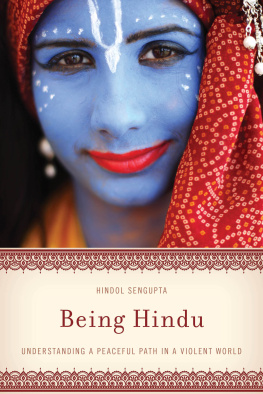
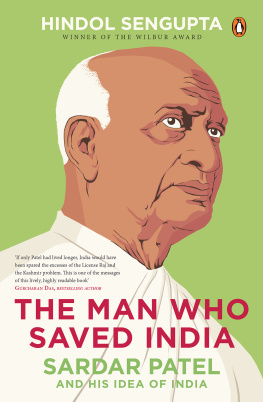

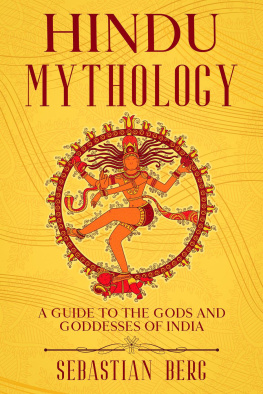


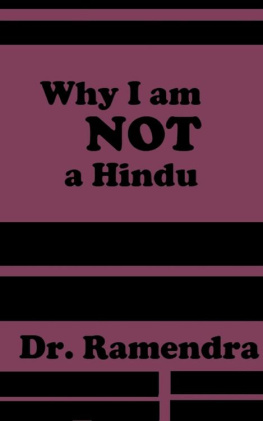
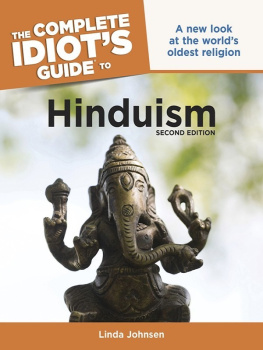
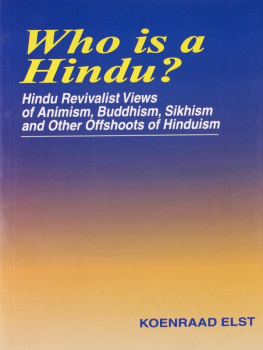
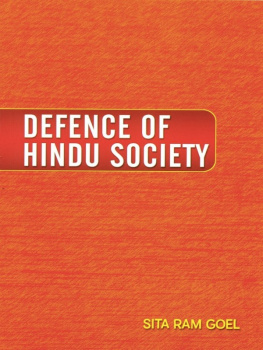
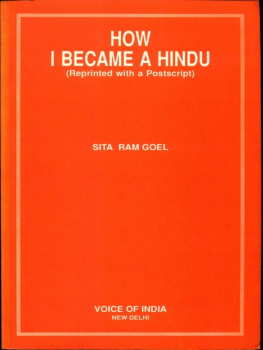
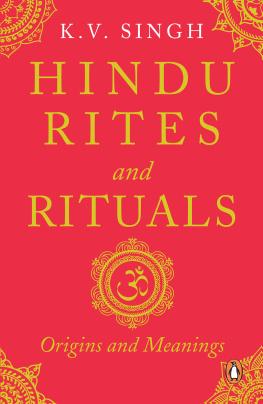
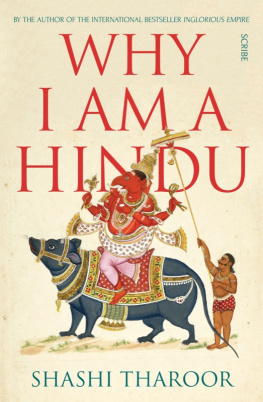

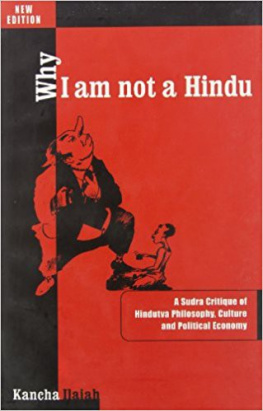
 TM The paper used in this publication meets the minimum requirements of American National Standard for Information Sciences Permanence of Paper for Printed Library Materials, ANSI/NISO Z39.48-1992.
TM The paper used in this publication meets the minimum requirements of American National Standard for Information Sciences Permanence of Paper for Printed Library Materials, ANSI/NISO Z39.48-1992.